Tours, located in the center of France, is an old city, founded by the Roman Emperor Augustus. Today, it has a population of around 140,000 (the metropole has 500,000).
The interesting part of the city is the old part (“Vieux Tours“), and several of the buildings located against the old city. The old city and parts around it are pedestrian only (plus public transportation, like their tramway).
There is one main artery, used by the tram and pedestrians which run North-South. It starts at the Loire river with a pedestrian bridge and continues all the way to the railway station.
 Pedestrian (and tram) bridge crossing the Loire river
Pedestrian (and tram) bridge crossing the Loire river Pedestrian shopping street
Pedestrian shopping street Hilton Hotel, churches and shops along this street
Hilton Hotel, churches and shops along this streetWhen looking North, on your right are the main buildings of Tours (Castle and Cathedral), on your left is the old city.
Parts of the pedestrian walk alongside the outer circle of the old city is not only pedestrianized, but also covered (a bit like the Ramblas in Barcelona).
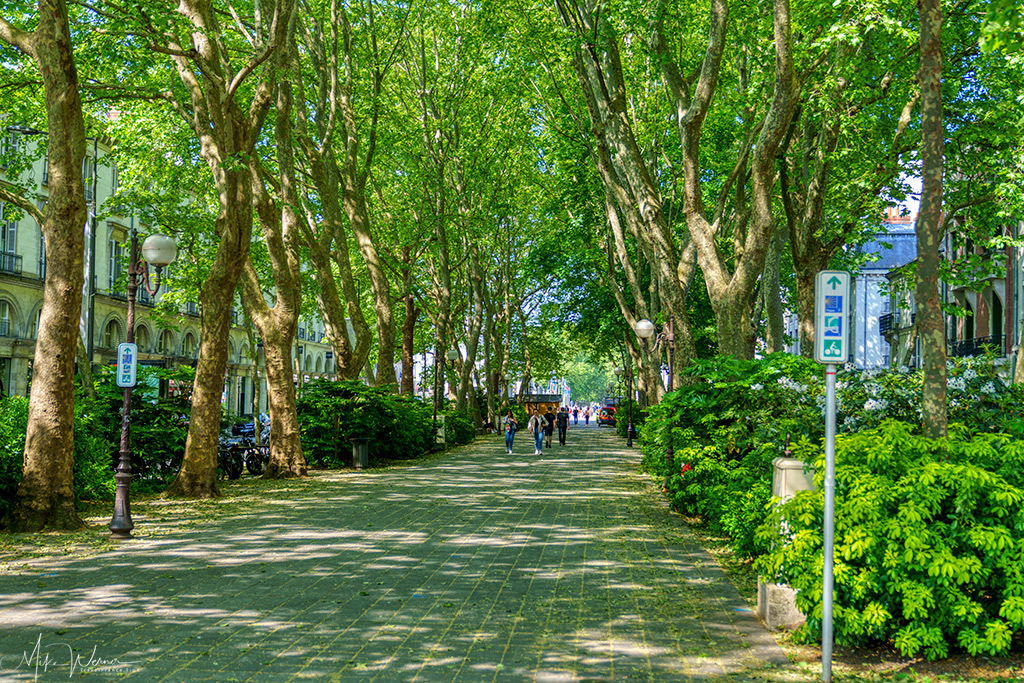
Parks
When walking through Tours, you will be surprised by the number of public parks; small and big ones. There are quite a lot of them.
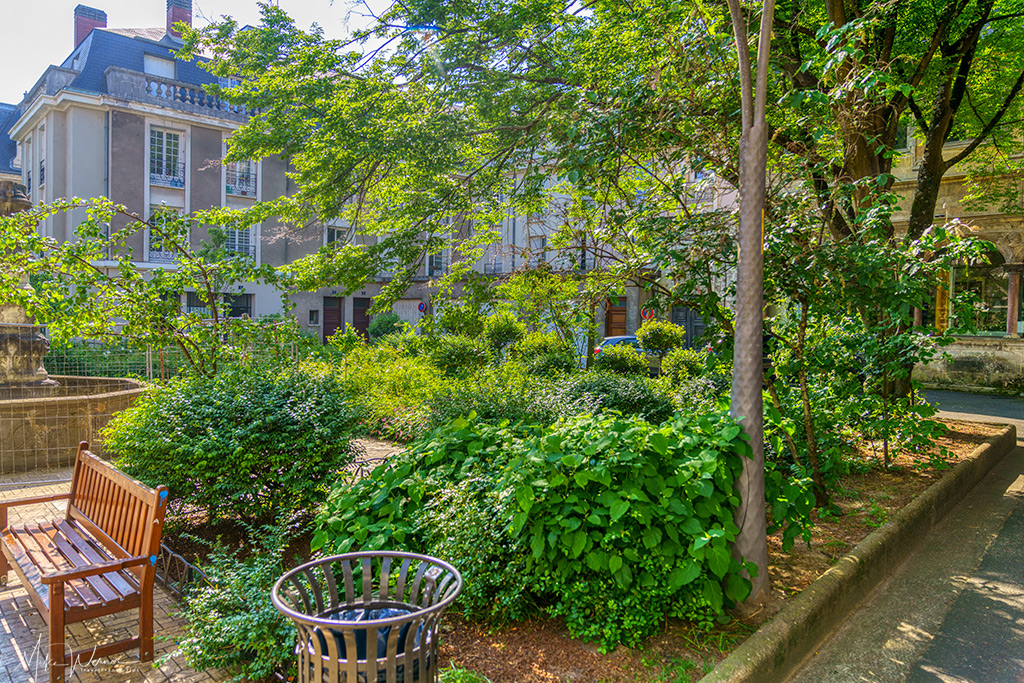 Beaune-Semblançay Garden
Beaune-Semblançay Garden Other side of the Beaune-Semblançay Garden
Other side of the Beaune-Semblançay Garden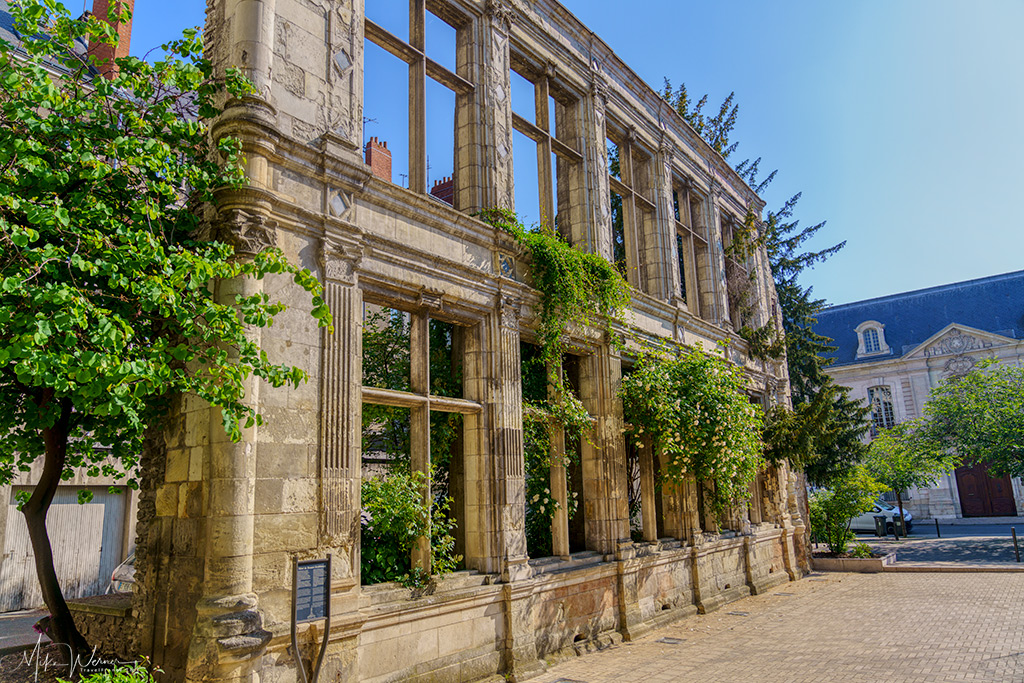 Leftover wall of the Facade of the Palais de Beaune Semblancay
Leftover wall of the Facade of the Palais de Beaune Semblancay Francois Sicard Gardens
Francois Sicard Gardens Statue at the Francois Sicard Gardens
Statue at the Francois Sicard Gardens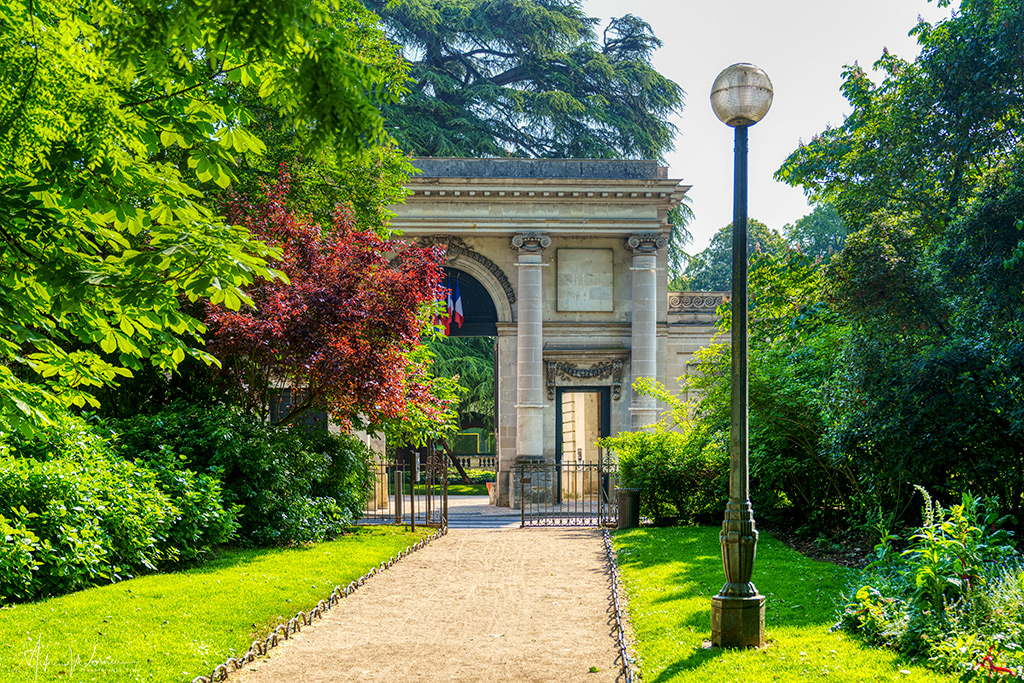 Gate from Francois Sicard to the Musee des Beaux-Arts Garden
Gate from Francois Sicard to the Musee des Beaux-Arts Garden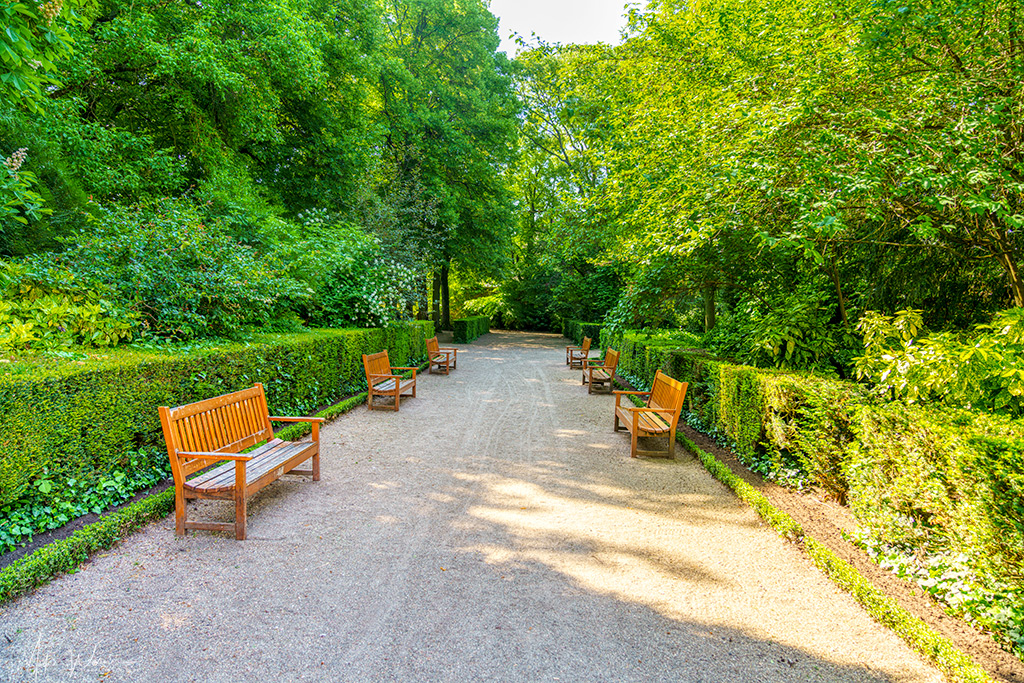 Musee des Beaux-Arts Garden
Musee des Beaux-Arts Garden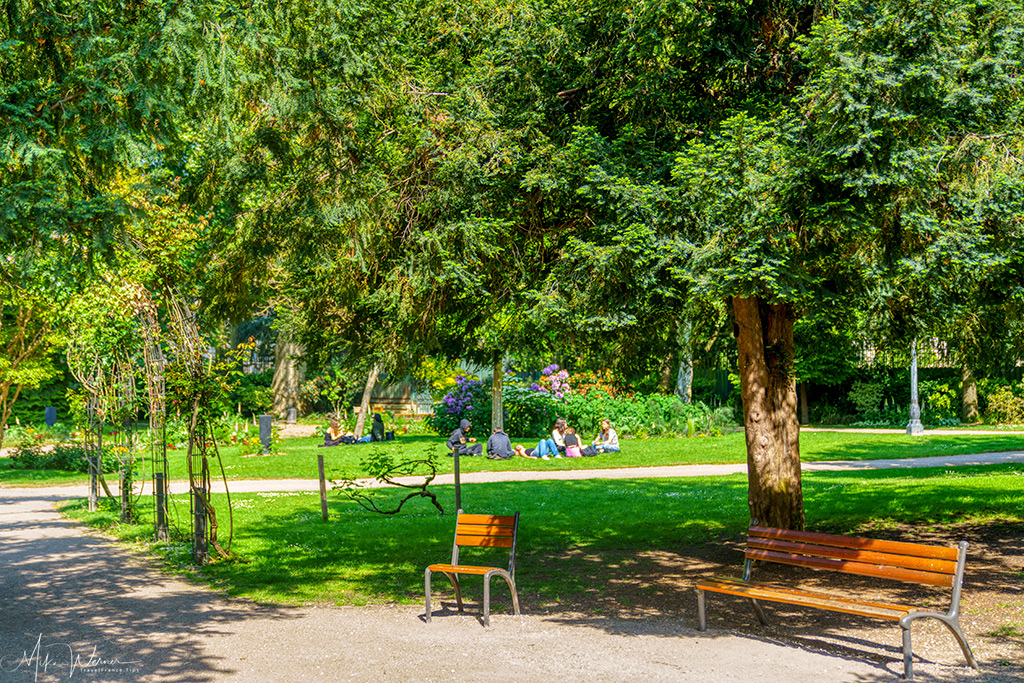 Prefecture Garden
Prefecture GardenIn the Museum gardens (Musee des Beaux-Arts, more on that further on), you will find an enormous and very old (300 years) Lebanese Cedar tree.
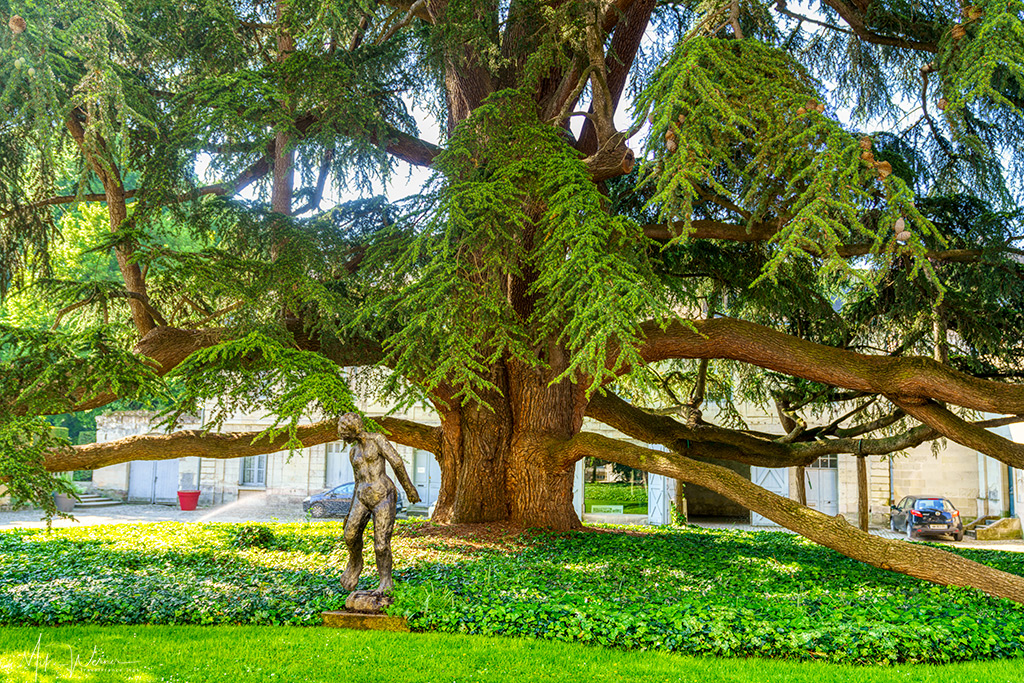
There is also a rather big botanical garden, located to the West of the old city. It’s called “Jardin botanique de Tours“, and access is free.
Buildings
Tours has mostly older buildings, but there is a sprinkling of new, modern, buildings. However, the newer ones are located in the outer ring of the old city.
Most of the older buildings are well maintained. In the space of 100 meters, you can go from a modern building, like this one:…..

….. to a part of a very old building whose facade is the only thing left;

The Palais de Beaune-Semblancay was a house built in the 15th century. It was built for Jacques de Beaune, baron de Semblancay, superintendent of finances to King François I. The building, and many others around it were destroyed during the opening stage of World War II. The Germans, using tracer rounds, set fire to 12 hectares of buildings and houses on the 19h of June 1940. The fire raged uncontrolled for 3 days and nights. 24 municipal buildings were lost, and 9,000 people become homeless. All that is left is the facade.
Grand Theatre – Opera De Tours
The Opera of Tours, also known as the Grand Theatre stands squeezed between several buildings. It has however, a majestic feel:
 Grand Theatre – Opera De Tours
Grand Theatre – Opera De Tours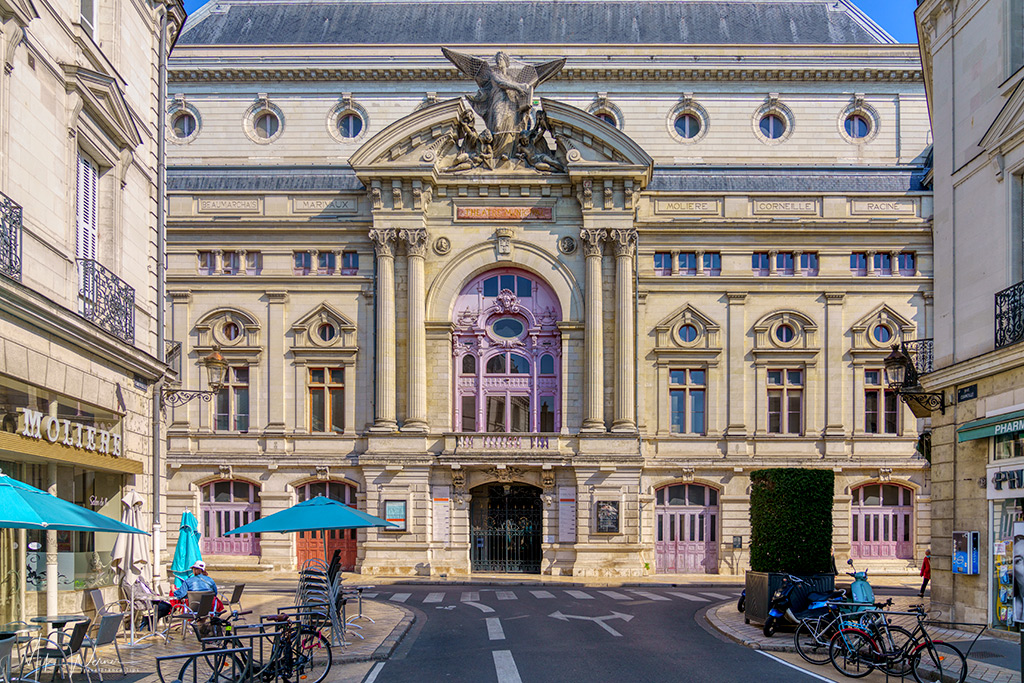 Grand Theatre – Opera De Tours
Grand Theatre – Opera De Tours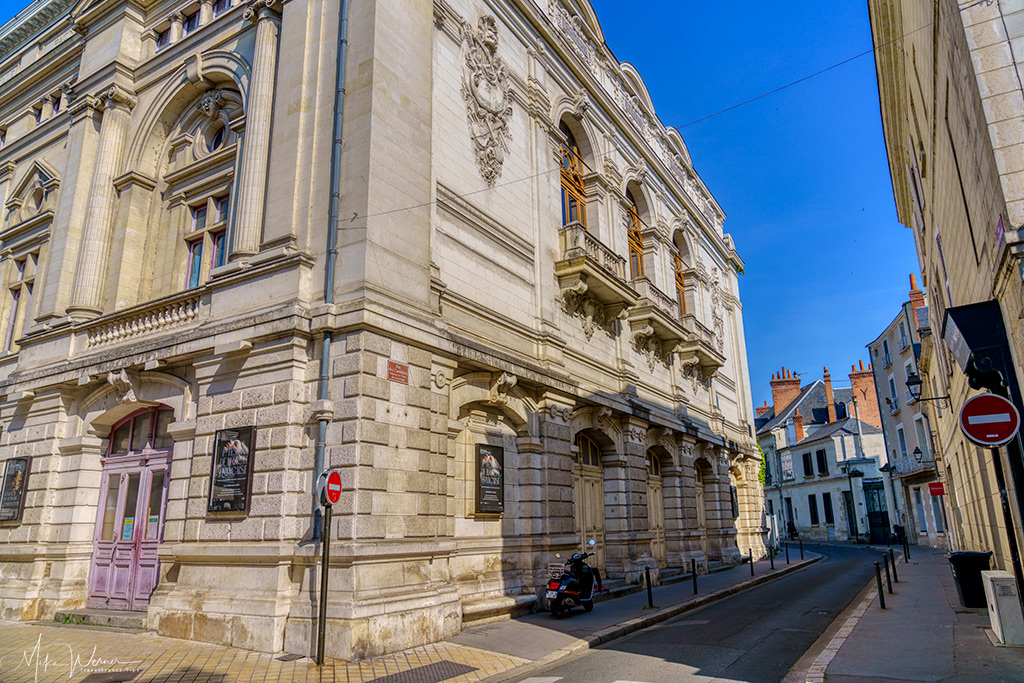 Grand Theatre – Opera De Tours
Grand Theatre – Opera De ToursConstruction of the Opera building started in 1867 (inaugurated in 1889) on the spot where a church had been built. The church had already been converted into a theatre in 1796. In 1867, the city bought the place, destroyed the old church and built a new theatre. However, in 1883 a fire destroyed most of the theatre. Only the walls remained.
Therefore the inside is quite modern and has a seating capacity of 950 people.
Musee des Beaux-Arts
The Musee des Beaux-Arts de Tours (Museum of Fine Arts of Tours) is located in the bishop’s former palace, near the cathedral St. Gatien, where it has been since 1910. It displays rich and varied collections, including that of a painting which is one of the first in France both in quality and the diversity of the works presented.
 Museum of Fine Arts of Tours
Museum of Fine Arts of Tours Entrance to the Museum of Fine Arts of Tours
Entrance to the Museum of Fine Arts of Tours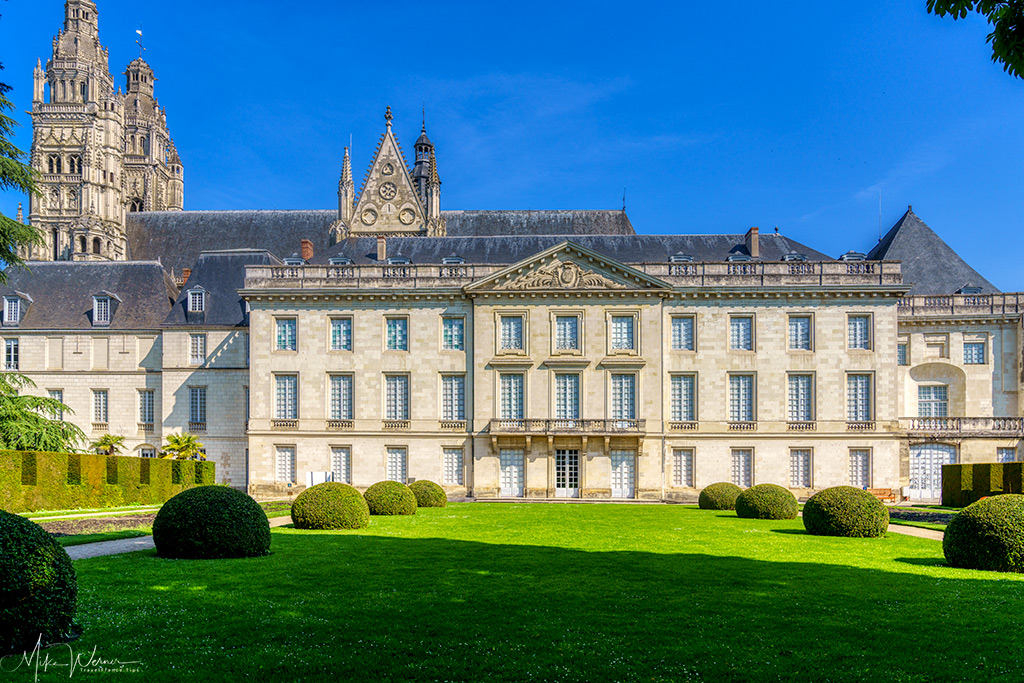 Museum of Fine Arts of Tours
Museum of Fine Arts of ToursClick here to access the Museum’s website (in French only)
Chateau de Tours
The Chateau de Tours (Tours castle) is an 11th century castle. It was almost completely destroyed in the 18th century. Until recently, it was an aquarium, but in 2001 it was turned into a museum.
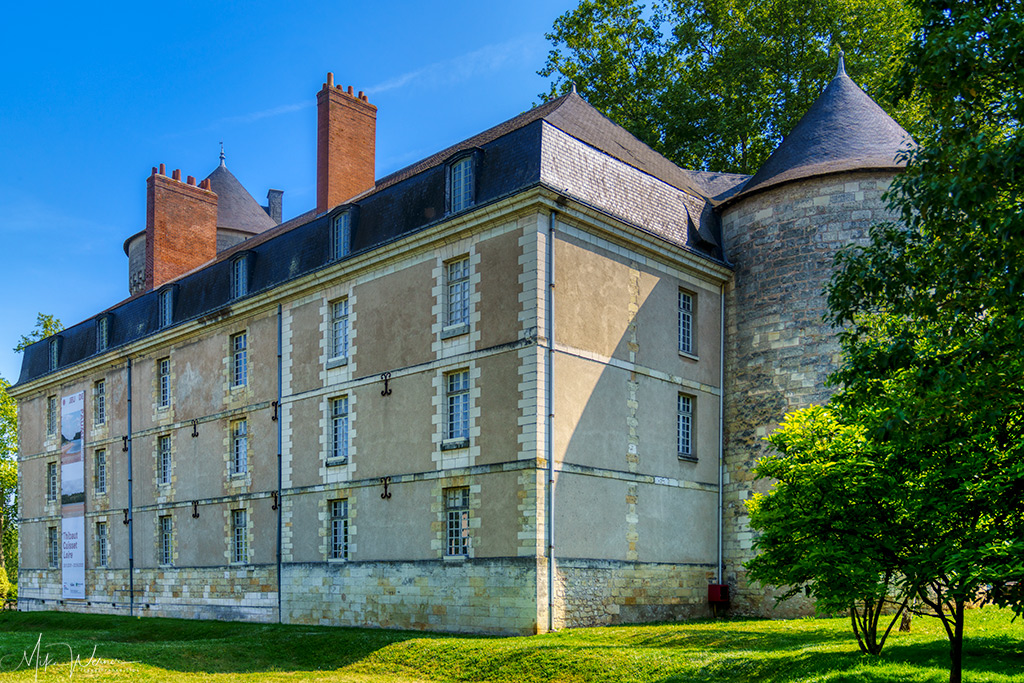 Tours castle
Tours castle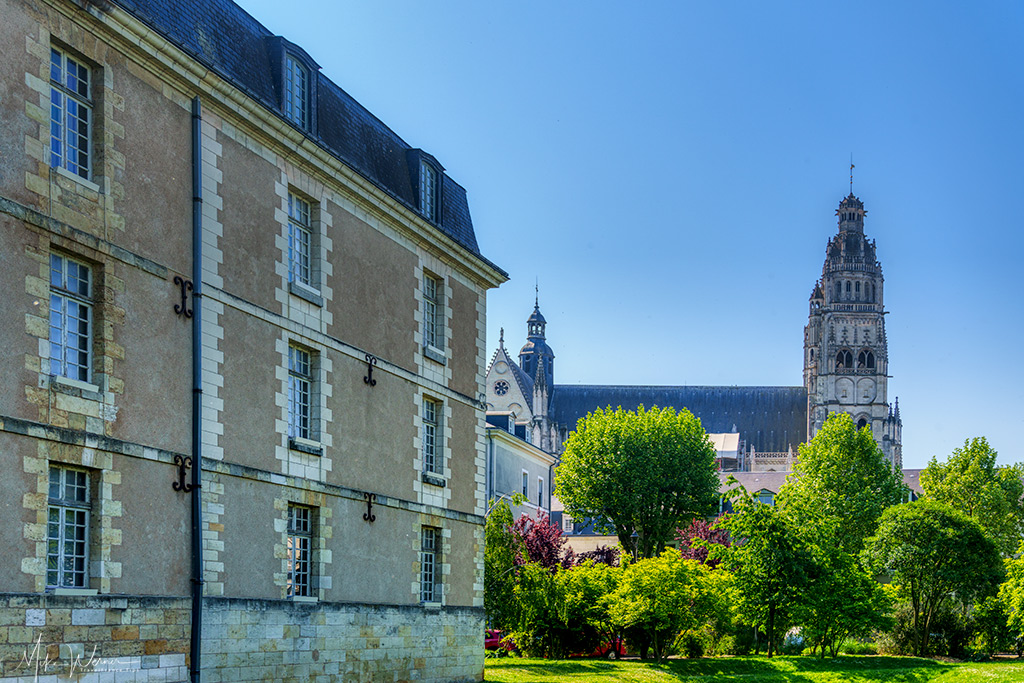 Tours castle and Cathedral in background
Tours castle and Cathedral in background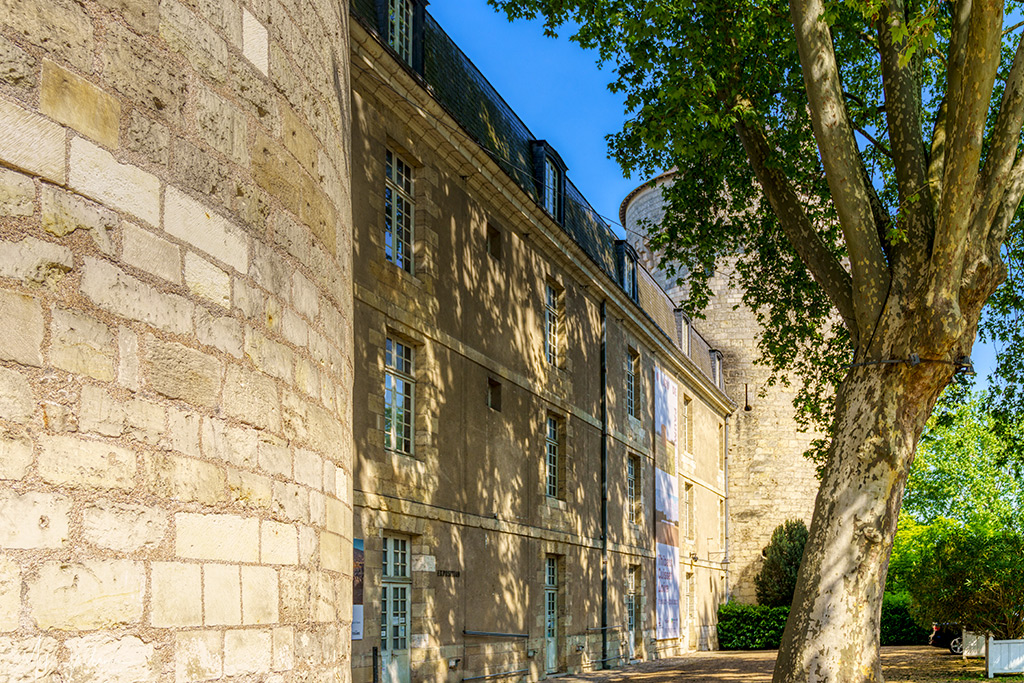 Chateau de Tours
Chateau de Tours Tower of the Chateau de Tours
Tower of the Chateau de Tours Municipal Police on grounds of the castle
Municipal Police on grounds of the castleDuring WWII, the castle served as prison by the Germans.
Click here to access the castle’s website (in French only)
Railway Station
The SNCF Railway station is to be seen. The “Gare SNCF” is a design beauty, rarely seen in railway stations. The initial building of the station started in 1846, and the main passenger building was constructed in 1896.
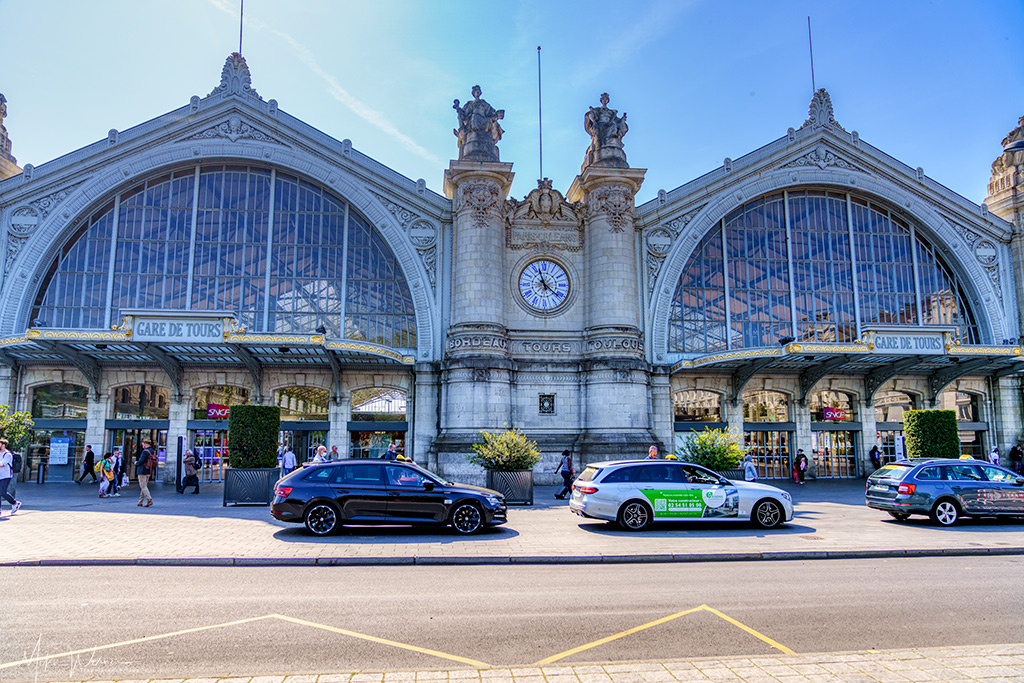 Main railway station of Tours
Main railway station of Tours Fountain at the railway station of Tours
Fountain at the railway station of ToursThere is another railway station, a more modern one, serving Tours. It’s called “Gare de Saint-Pierre-des-Corps” in a village 2.7 km from Tours.
Opposite of the railway station you will find the modern Vinci – International Congress Center.
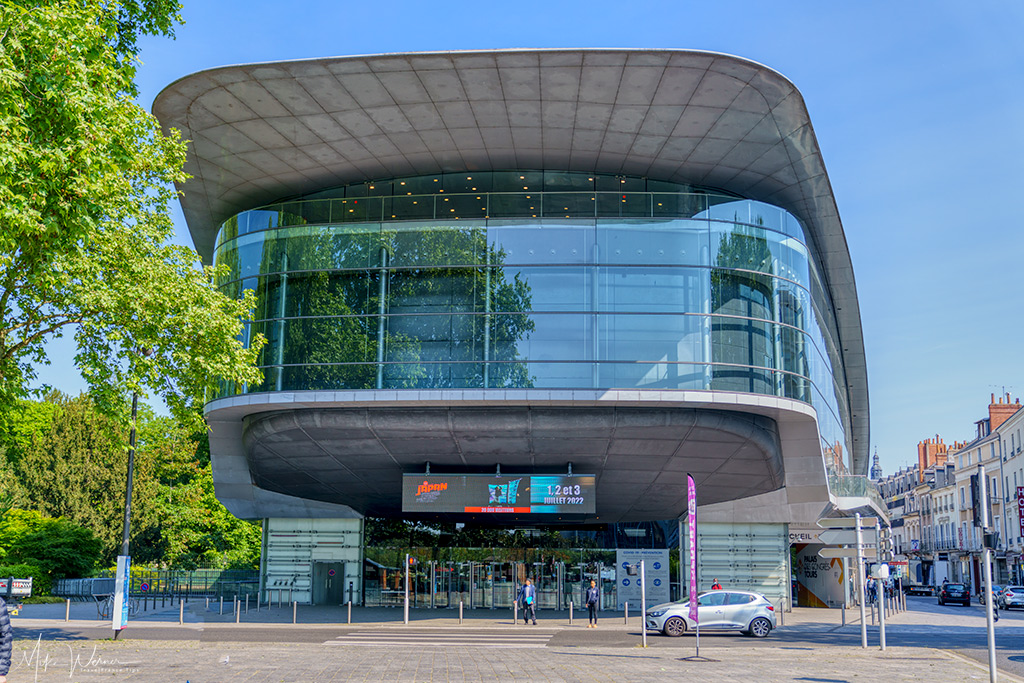
This is where concerts, festivals, symposiums and business events are held. Click here to access the Center’s website (in French only).
City Hall (Mairie or Hotel de Ville)
Tours’ City Hall is another building that merits a good look. The building’s construction started in 1896 (and finished in 1904). This ornate building was designed by Victor Laloux, who also designed the Basilica (see more below).
 Hotel de Ville (City Hall) of Tours
Hotel de Ville (City Hall) of Tours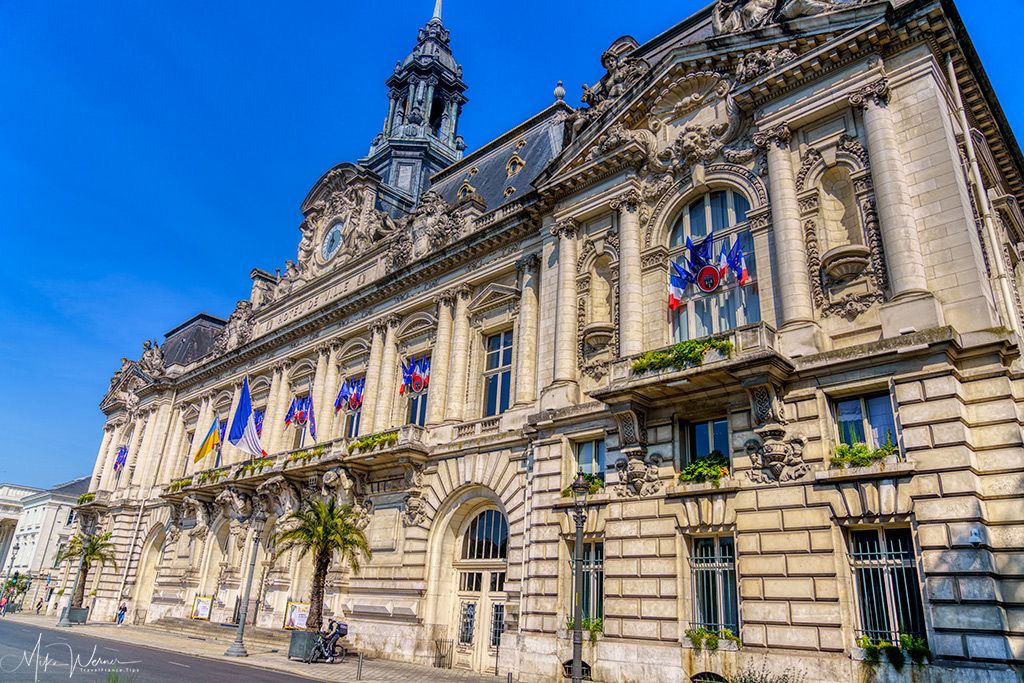 Side view of the Hotel de Ville
Side view of the Hotel de VilleNext to the City Hall, you will find Tours’ main courts of justice (Palais de Justice):
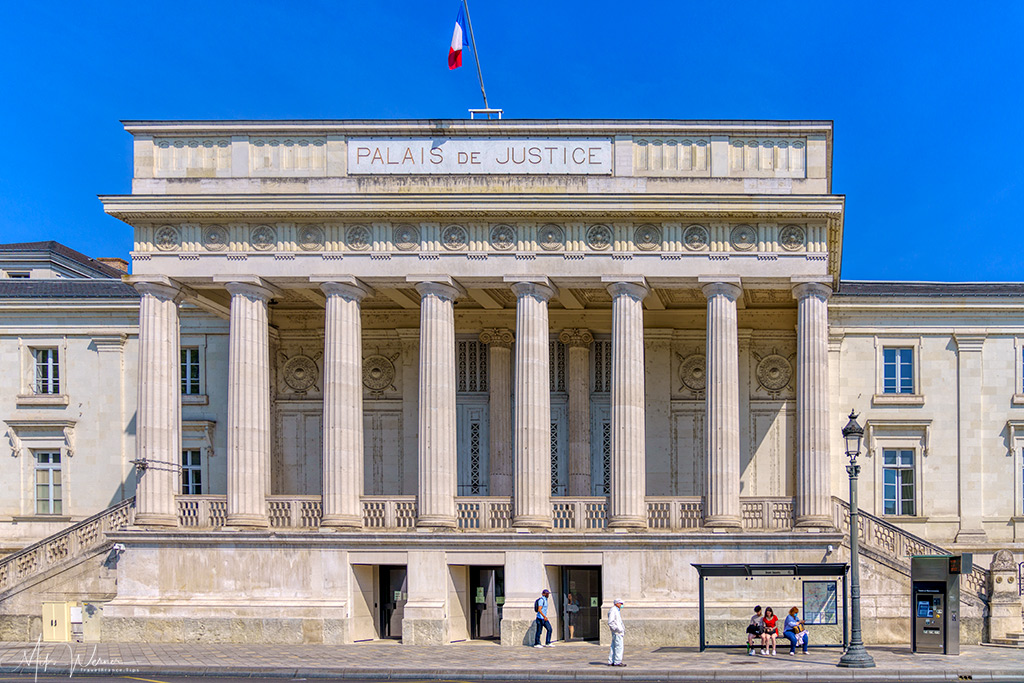
Houses
Around Tours, in the old city, you will find many old houses, most well preserved. Some of the houses are majestic:
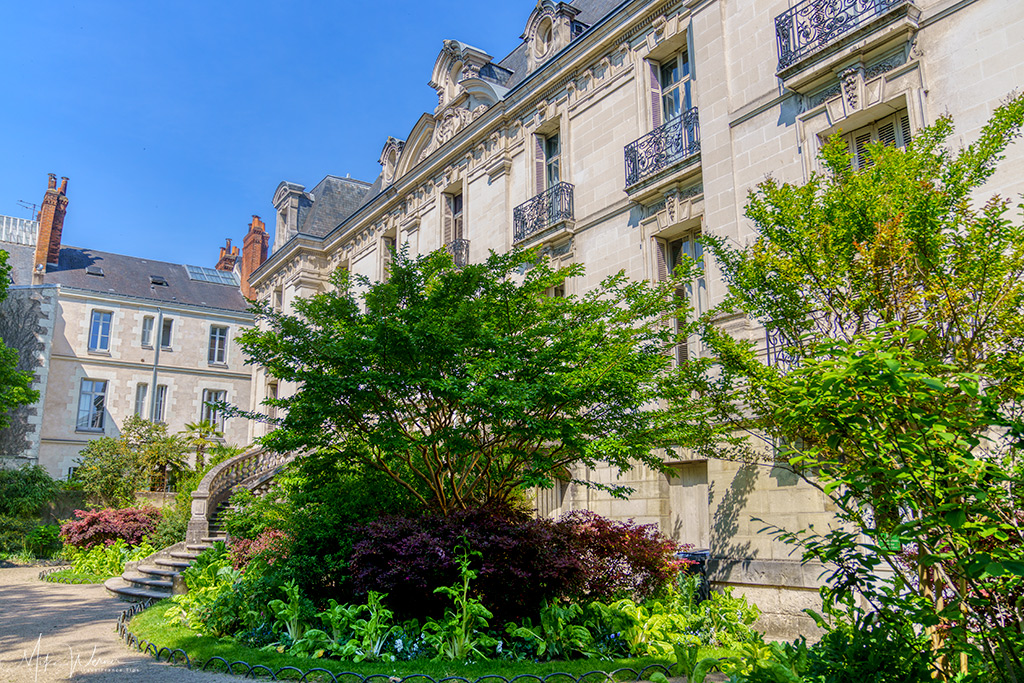
The Institut de Touraine is a French language school for foreigners. The house it is in, built in 1862, belonged to the Torterue family.
But most old houses were built from wood:
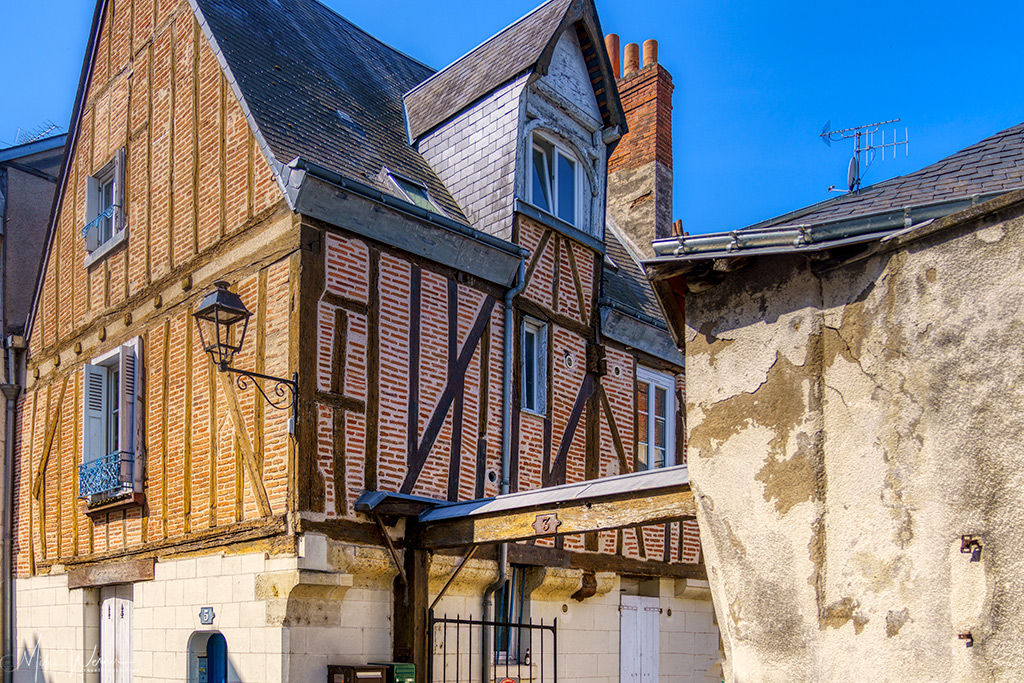 Wood and brick house
Wood and brick house Wood and brick house
Wood and brick house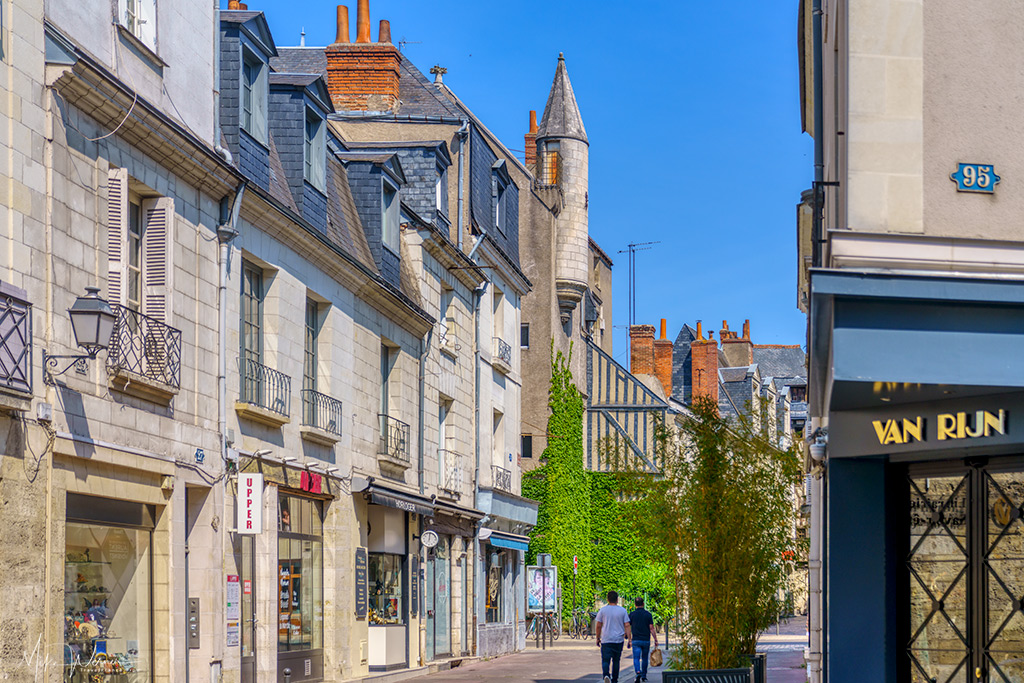 Wood and brick house and tower
Wood and brick house and tower Street
Street Wood and straw house
Wood and straw house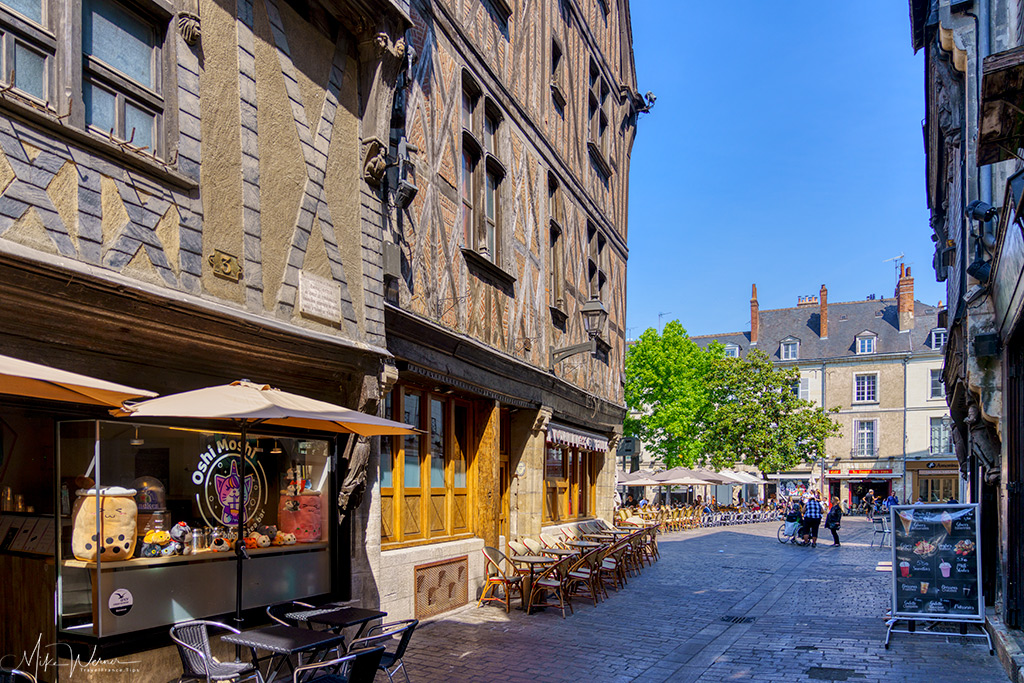 Wood and brick house
Wood and brick house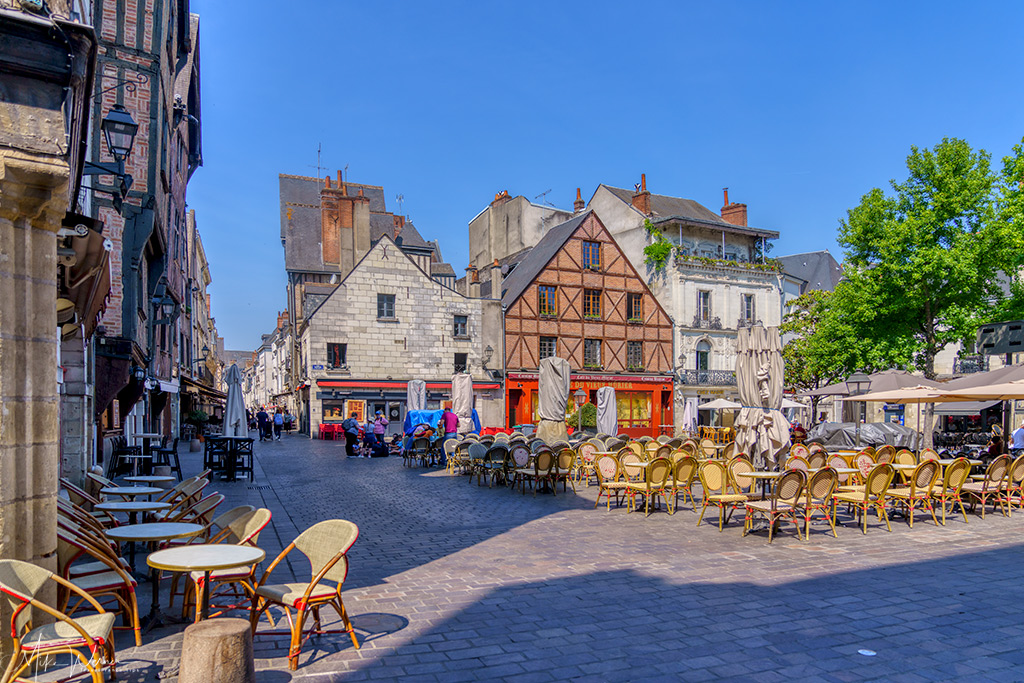 Wood and brick houses
Wood and brick houses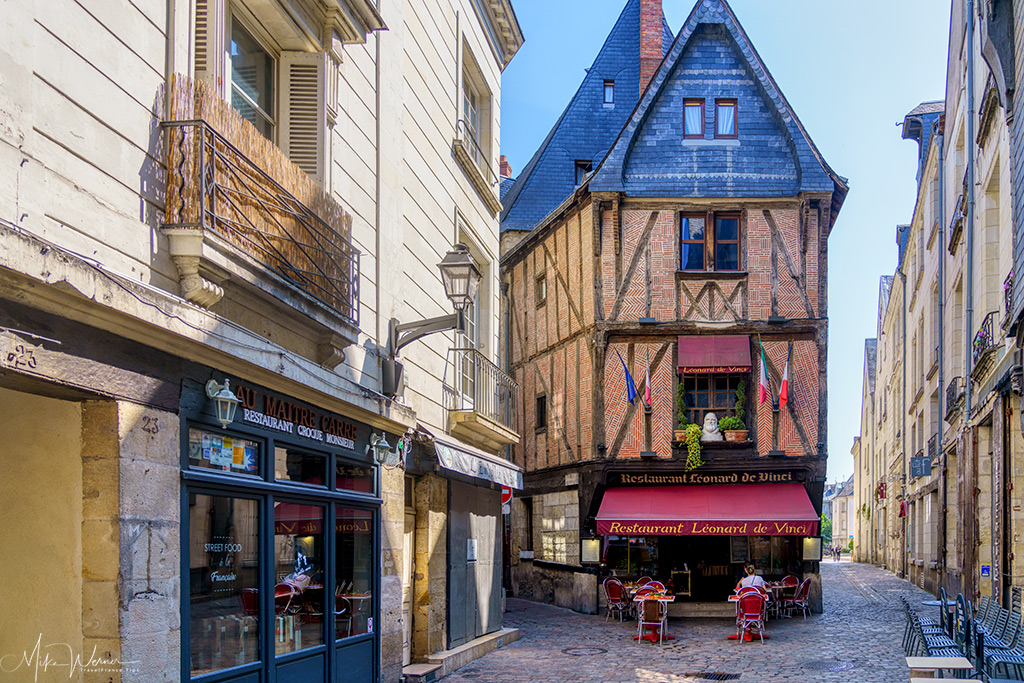 Wood and brick house
Wood and brick house Wood and brick house
Wood and brick house Wood and brick house
Wood and brick houseLes Halles
And of course, like in any self-respecting French city, you will find a covered food market place, and like elsewhere, it’s called “Les Halles“.
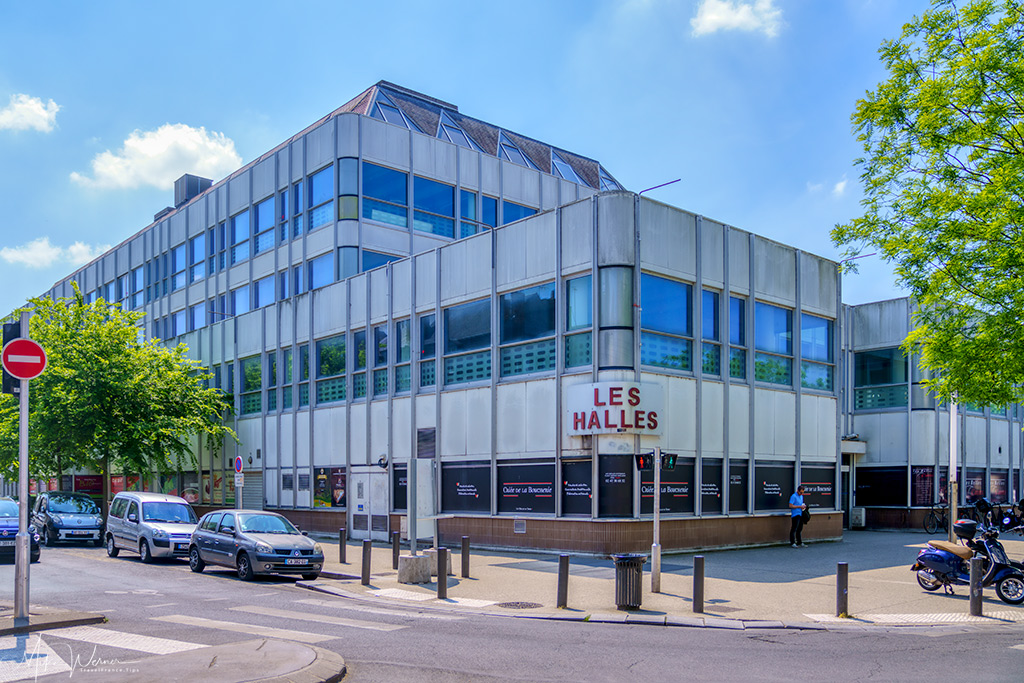 Food Market (Les Halles)
Food Market (Les Halles)Some of the Churches
As you would expect, there are quite a few churches, basilicas, abbeys and a cathedral in this city. Here is a separate post which will show you some of them. Click here to read the post.
Conclusion
Tours is a pretty city, and despite the destructions of WWII, it’s well maintained. The old city is nice to walk, since most streets are pedestrian only.
Roads are easy, not that many cobblestones, so walking or using a wheelchair should not be difficult. There are no hills to climb.
Related Posts
- 10000
- 10000
- 10000
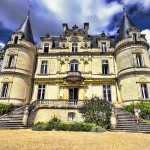 Built: 19th centuryStatus: Hotel/RestaurantVisitable?: Yes, as a customerNotable: Unrestricted and impressive view over the Indre river and valley and great restaurantWeb: TortiniereRestaurantFood: FrenchPrice: ExpensiveRating: Excellent In the small village of Veigne, close to the city of Tours, you will find a magnificent estate that towards the middle of last century was turned…
Built: 19th centuryStatus: Hotel/RestaurantVisitable?: Yes, as a customerNotable: Unrestricted and impressive view over the Indre river and valley and great restaurantWeb: TortiniereRestaurantFood: FrenchPrice: ExpensiveRating: Excellent In the small village of Veigne, close to the city of Tours, you will find a magnificent estate that towards the middle of last century was turned… - 10000
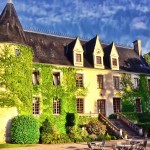 Built: 15th centuryStatus: WineryVisitable?: Yes, as a guestNotable: The castle is a modified fortress, now a luxury hotel (this is no longer a hotel but a winery). The castle used to belong to the Marquis la Fayette (the French general who helped the USA gain its independence from the UK)Web: Chateau…
Built: 15th centuryStatus: WineryVisitable?: Yes, as a guestNotable: The castle is a modified fortress, now a luxury hotel (this is no longer a hotel but a winery). The castle used to belong to the Marquis la Fayette (the French general who helped the USA gain its independence from the UK)Web: Chateau… - 65



